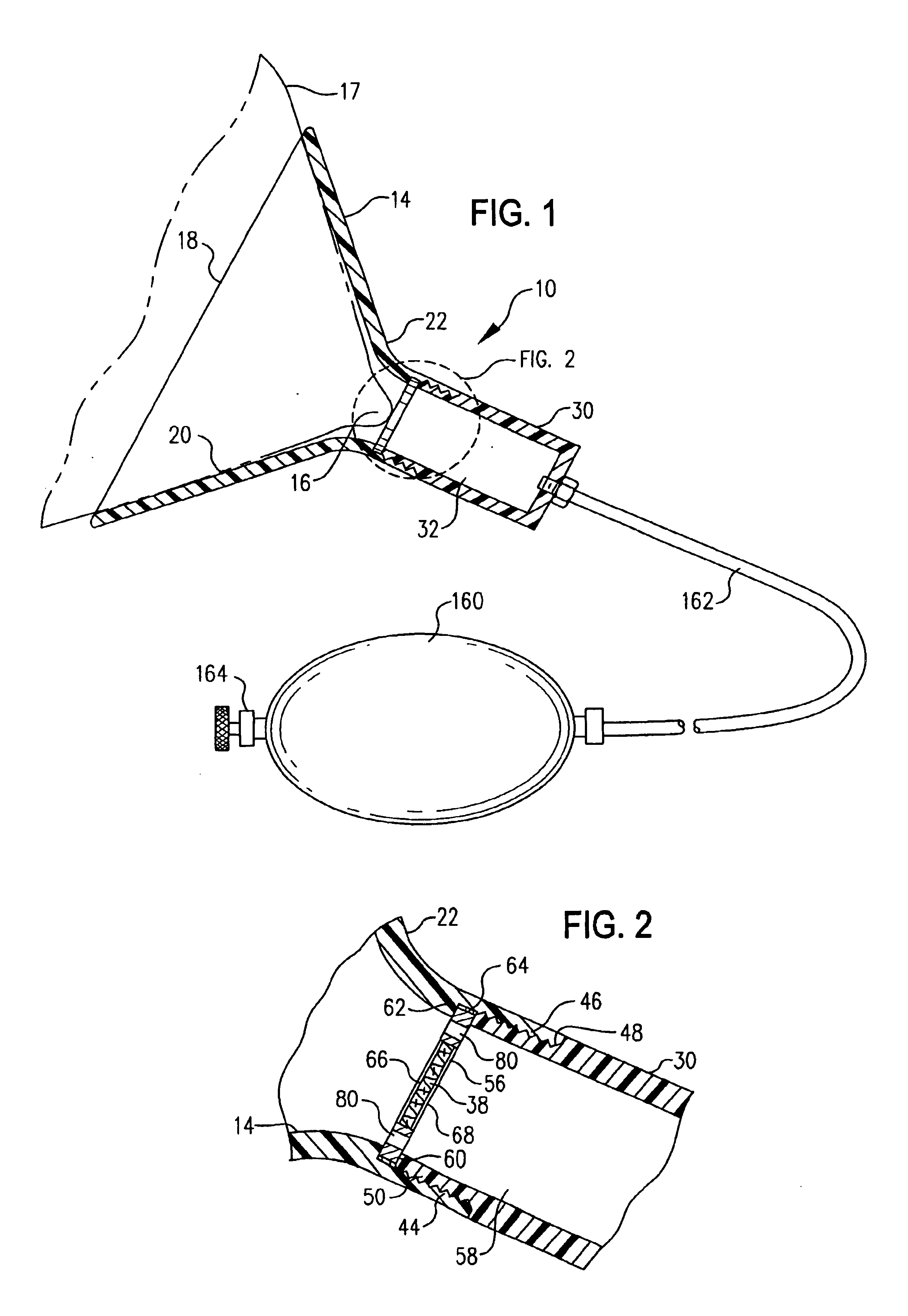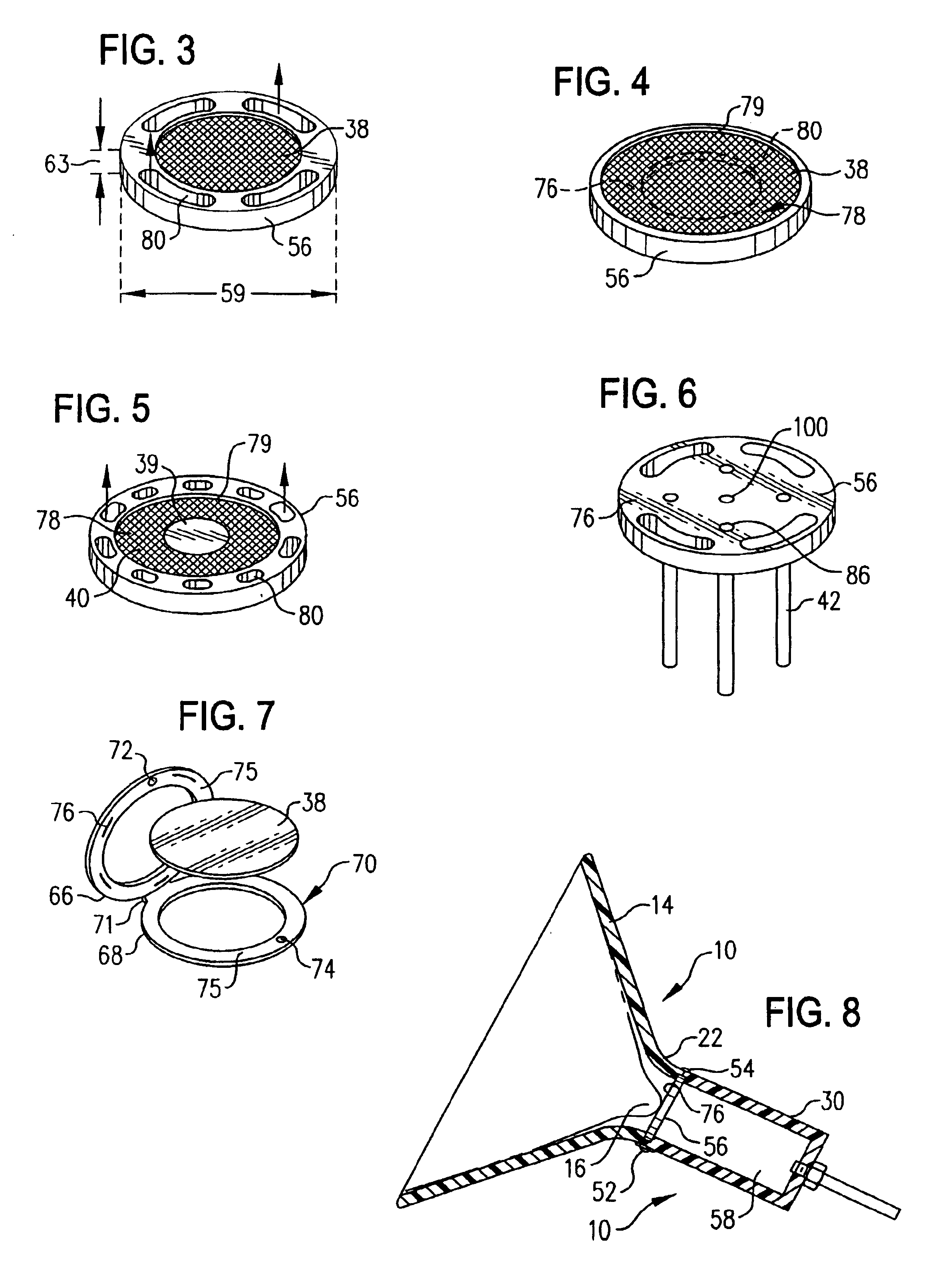Devices and methods for obtaining mammary fluid samples for evaluating breast diseases, including cancer
a technology for breast diseases and biological samples, applied in the field of mammary fluid biological samples obtained and assaying kits, can solve the problems of difficult detection of malignant and benign breast diseases, difficult detection of cancer markers, and difficulty in detecting malignant breast diseases, so as to reduce morbidity and cost, and the effect of high sensitive natur
- Summary
- Abstract
- Description
- Claims
- Application Information
AI Technical Summary
Benefits of technology
Problems solved by technology
Method used
Image
Examples
example 1
Induction of Mammary Fluid Expression by Application of a Novel Breast Pump / Mammary Fluid Sample Collection Device
[0216]Within the present example, a hand-held breast pump device 10′ is employed to collect a primary sample of mammary fluid components comprising whole cells and cell fragments for cytological examination. The doctor, technician or patient collects the breast fluid specimen by grasping and operating the hand-held pump as described above to stimulate expression of the mammary fluid and collect a specimen thereof. This operation is a one-handed procedure, leaving the physician or technician free to conduct additional activities with the other, free hand. In this regard, the compact hand-held pump design allows the device to be picked up and manipulated with one hand, to seat the breast engaging element against the breast, apply sufficient vacuum pressure to the breast by manual operation of the vacuum pump to cause a suitable volume of breast fluid to be expressed at or ...
example 2
Cytology in Biological Samples From Mammary Fluid
[0219]This example describes the use of conventional cytological techniques to identify and classify breast diseases from samples obtained as described in Example 1. Following collection of the sample, e.g., in a fluid-retaining reservoir member, the sample may be further processed (e.g., by centrifugation wherein the reservoir member is in the form of a modified cytology vial). Processed samples are then transferred to the central region of a clean glass microscopic slide, and a cover slip is slid over the sample to spread it along the surface of the slide. The slide is allowed to air dry and then is fixed, for example in absolute alcohol, and stained with standard cytological stains, such as methylene blue, hematoxyln and eosin, and other suitable stains.
[0220]The slides are then examined by light microscopy for evidence of atypical growth of cells and clumps of cells, using well known methods, including those described in Diagnosis...
example 3
Stimulation of Mammary Fluid Expression for Sample Collection by Coordinate Administration of Intranasal Oxytocin in Conjunction with Application of a Novel Breast Pump / Mammary Fluid Sample Collection Device
[0221]The foregoing sample collection protocol in Example 1, as well as other sample collection methods within the invention, may be practiced solely by the use of a novel breast pump 10, 10′ of the invention. Alternatively, these sample collection procedures may be practiced in conjunction with the use of oxytocin or oxytocin analogs to facilitate or increase mammary fluid expression induced by operation of the breast pump. As incorporated within the invention, these methods involve application of the breast pump 10, 10′ to the breast, optionally coupled with oxytocin administration in amounts effective to facilitate mammary fluid expression in the patient. After the sample is collected, a bioassay is conducted on the sample to determine the presence and / or amount of a selected ...
PUM
| Property | Measurement | Unit |
|---|---|---|
| diameter | aaaaa | aaaaa |
| pore size | aaaaa | aaaaa |
| pore size | aaaaa | aaaaa |
Abstract
Description
Claims
Application Information
 Login to View More
Login to View More - R&D
- Intellectual Property
- Life Sciences
- Materials
- Tech Scout
- Unparalleled Data Quality
- Higher Quality Content
- 60% Fewer Hallucinations
Browse by: Latest US Patents, China's latest patents, Technical Efficacy Thesaurus, Application Domain, Technology Topic, Popular Technical Reports.
© 2025 PatSnap. All rights reserved.Legal|Privacy policy|Modern Slavery Act Transparency Statement|Sitemap|About US| Contact US: help@patsnap.com



